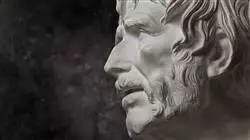University certificate
The world's largest faculty of education”
Introduction to the Program
A complete review of the most fundamental philosophical themes, from the most purely theoretical to the most practical human issues”

Contemporary human beings, lost in a morass of mutually exclusive political and ethical proposals, finds themselves in a state of stupor: What should I think, who is right, how should I act? In such circumstances of personal and intellectual shipwreck, Ortega's words become more timelier than ever: "When a human being does not know what to do, the only thing left is to think."
Apart from the human aspect, philosophy provides a different point of view on reality and on things, which makes it immensely attractive from a labor point of view. In today's job market, philosophers who complement their studies with master's degrees in investment and finance, for example, or economics students who enrich their intellectual background with master's degrees in philosophy are immensely valued and sought after by head-hunters from all over the world. The philosopher's ability to see things from a different perspective, to think outside the box, as it were, is a fundamental asset in the creative and frenetic world we live in.
Philosophy helps to see things, as the great Spinoza used to say: Aespecie Aeternitatis. That is to say, under a prism of eternity, knowing that in the great context of the world and the universe our actions are both relevant and insignificant. The role of philosophy as a consolatory discipline in the face of the evils and misfortunes of this world has always been fundamental, and it also allows us to better understand our nature, our actions, our morality, and our being. In short, philosophy helps us to grow as people, to mature as individuals, to be more responsible citizens and to improve our work performance.
This program approaches Philosophy from a global perspective, but at the same time totally accessible. Other Professional master’s degree focus on the purely theoretical study of Philosophy, disconnecting it from the pedagogical aspect; this one will always try to maintain a teaching approach. Today it is more important than ever to offer a teaching of philosophy that is both rigorous and comprehensible. Students can expect to gain a complete body of knowledge of the most fundamental philosophical themes, from the most purely theoretical and metaphysical to the most practical and active human issues.
Access the teaching of one of the most useful disciplines to comprehend human nature and its reasons”
This Professional master’s degree in Teaching Philosophy and Ethical Values contains the most complete and up-to-date program on the market. The most important features include:
- More than 75 Practice cases presented by experts in the subject
- Its graphic, schematic and practical contents provide scientific and practical information on those disciplines that are essential for professional practice
- It contains practical exercises where the self-evaluation process can be carried out to improve learning
- Special emphasis on innovative methodologies
- All of this will be complemented by theoretical lessons, questions to the expert, debate forums on controversial topics, and individual reflection assignments
- Content that is accessible from any fixed or portable device with an Internet connection
- Complementary content available in multimedia format
Access the teaching of one of the most useful disciplines to comprehend human nature and its reasons. The Professional master’s degree in Teaching Philosophy and Ethical Values will enable you to approach this subject with the guarantee of a complete and well-developed program”
The teaching staff includes teaching professionals in Philosophy and Ethical Values who bring their experience to this program, as well as renowned specialists belonging to leading societies and prestigious universities. Thanks to its multimedia content developed with the latest educational technology, it will allow the professional a situated and contextual learning, that is to say, a simulated environment that will provide an immersive learning programmed to train in real situations.
This program is designed around Problem-Based Learning, whereby the professional must try to solve the different professional practice situations that arise throughout the program. For that purpose, professionals will be assisted by an innovative, interactive video system created by renowned and experienced experts in Teaching Philosophy and Ethical Values who also have extensive teaching experience.
Philosophy from a global perspective but perfectly accessible, with a direct pedagogical orientation"

A program focused on the ABS system, Problem-Based Learning, which will enable you to learn through the experience of real cases and practical scenarios"
Why study at TECH?
TECH is the world’s largest online university. With an impressive catalog of more than 14,000 university programs available in 11 languages, it is positioned as a leader in employability, with a 99% job placement rate. In addition, it relies on an enormous faculty of more than 6,000 professors of the highest international renown.

Study at the world's largest online university and guarantee your professional success. The future starts at TECH”
The world’s best online university according to FORBES
The prestigious Forbes magazine, specialized in business and finance, has highlighted TECH as “the world's best online university” This is what they have recently stated in an article in their digital edition in which they echo the success story of this institution, “thanks to the academic offer it provides, the selection of its teaching staff, and an innovative learning method aimed at educating the professionals of the future”
A revolutionary study method, a cutting-edge faculty and a practical focus: the key to TECH's success.
The most complete study plans on the university scene
TECH offers the most complete study plans on the university scene, with syllabuses that cover fundamental concepts and, at the same time, the main scientific advances in their specific scientific areas. In addition, these programs are continuously being updated to guarantee students the academic vanguard and the most in-demand professional skills. In this way, the university's qualifications provide its graduates with a significant advantage to propel their careers to success.
TECH offers the most comprehensive and intensive study plans on the current university scene.
A world-class teaching staff
TECH's teaching staff is made up of more than 6,000 professors with the highest international recognition. Professors, researchers and top executives of multinational companies, including Isaiah Covington, performance coach of the Boston Celtics; Magda Romanska, principal investigator at Harvard MetaLAB; Ignacio Wistumba, chairman of the department of translational molecular pathology at MD Anderson Cancer Center; and D.W. Pine, creative director of TIME magazine, among others.
Internationally renowned experts, specialized in different branches of Health, Technology, Communication and Business, form part of the TECH faculty.
A unique learning method
TECH is the first university to use Relearning in all its programs. It is the best online learning methodology, accredited with international teaching quality certifications, provided by prestigious educational agencies. In addition, this disruptive educational model is complemented with the “Case Method”, thereby setting up a unique online teaching strategy. Innovative teaching resources are also implemented, including detailed videos, infographics and interactive summaries.
TECH combines Relearning and the Case Method in all its university programs to guarantee excellent theoretical and practical learning, studying whenever and wherever you want.
The world's largest online university
TECH is the world’s largest online university. We are the largest educational institution, with the best and widest online educational catalog, one hundred percent online and covering the vast majority of areas of knowledge. We offer a large selection of our own degrees and accredited online undergraduate and postgraduate degrees. In total, more than 14,000 university degrees, in eleven different languages, make us the largest educational largest in the world.
TECH has the world's most extensive catalog of academic and official programs, available in more than 11 languages.
Google Premier Partner
The American technology giant has awarded TECH the Google Google Premier Partner badge. This award, which is only available to 3% of the world's companies, highlights the efficient, flexible and tailored experience that this university provides to students. The recognition as a Google Premier Partner not only accredits the maximum rigor, performance and investment in TECH's digital infrastructures, but also places this university as one of the world's leading technology companies.
Google has positioned TECH in the top 3% of the world's most important technology companies by awarding it its Google Premier Partner badge.
The official online university of the NBA
TECH is the official online university of the NBA. Thanks to our agreement with the biggest league in basketball, we offer our students exclusive university programs, as well as a wide variety of educational resources focused on the business of the league and other areas of the sports industry. Each program is made up of a uniquely designed syllabus and features exceptional guest hosts: professionals with a distinguished sports background who will offer their expertise on the most relevant topics.
TECH has been selected by the NBA, the world's top basketball league, as its official online university.
The top-rated university by its students
Students have positioned TECH as the world's top-rated university on the main review websites, with a highest rating of 4.9 out of 5, obtained from more than 1,000 reviews. These results consolidate TECH as the benchmark university institution at an international level, reflecting the excellence and positive impact of its educational model.” reflecting the excellence and positive impact of its educational model.”
TECH is the world’s top-rated university by its students.
Leaders in employability
TECH has managed to become the leading university in employability. 99% of its students obtain jobs in the academic field they have studied, within one year of completing any of the university's programs. A similar number achieve immediate career enhancement. All this thanks to a study methodology that bases its effectiveness on the acquisition of practical skills, which are absolutely necessary for professional development.
99% of TECH graduates find a job within a year of completing their studies.
Professional Master’s Degree in Teaching Philosophy and Ethical Values
The scholar René Descartes used to say that to live without philosophizing is to have one's eyes closed without ever trying to open them. Such an idea raises the fundamental questioning of the course of the world itself and our role in it; it is not enough to get through life, one must think about why one lives. In this lucubration, the search for knowledge and the redefinition of human ideals are key. This is the motive behind the Master's in Teaching Philosophy and Ethical Values offered by TECH Global University, a completely virtual tour of the nature of philosophical activity, the exploration of rationality, human rights, citizenship and politics, among other aspects of remarkable epistemological value. With a complete syllabus where critical thinking, reflective capacity, sociological concepts, multiculturalism and pedagogical vocation converge, we bring the graduate closer to a new perceptual dimension of the world and the development of civilization itself, in a continuous search to deconstruct human meaning and renew it for the sake of progress.
Study a postgraduate degree on philosophy and values
During the time of ancient Athens, young people used to gather around a wise man who used to ask them questions, which led to the self-discovery of universal truths. That teacher who was considered to be enlightened was Socrates. History tells us that, unfortunately, the political elite that ruled the city did not see this in a favorable light and the popular philosopher ended up being poisoned with hemlock. The chronology left a fateful but strong lesson: knowledge is power; one that threatens the status quo and the hegemony of those who want to rule with despotism. This is why philosophy is so valuable. The Master's that TECH offers you is an ideal way to reach it and even better, to be able to transmit it to future generations. If lack of time has always prevented you from delving into the philosophical field, this is your chance, because the online classes have total time flexibility and a digital immersion methodology that will make your vocation an inspiring legacy.







